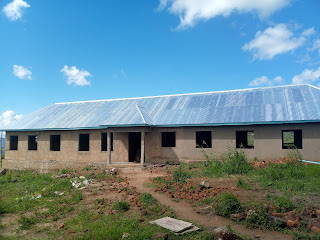Village development planning is a process of identifying and prioritizing the development needs of a rural community. It involves the participation of local residents, community leaders, and government officials to create a plan for the sustainable development of the village. The goal of village development planning is to improve the quality of life in the village by addressing issues such as access to basic services, economic development, environmental protection, and social welfare.

Building village school domitorry
The process of village development planning typically involves the following steps:
1. Community participation: The first step is to involve the community in the planning process. This may involve holding meetings, conducting surveys, and forming committees to gather input from local residents.
2. Needs assessment: Once community input has been gathered, a needs assessment is conducted to identify the most pressing issues facing the village.
3. Prioritization: Based on the needs assessment, priorities are established for addressing the identified issues. This may involve ranking them in order of importance or urgency.
4. Action planning: A plan is developed that outlines specific actions to be taken to address each of the identified issues. This may include setting goals, identifying resources needed, and establishing timelines.
5. Implementation: The plan is put into action through a variety of means, such as community-led initiatives, government programs, or partnerships with outside organizations.
6. Monitoring and evaluation: Progress is monitored and evaluated to ensure that the plan is being implemented effectively and that desired outcomes are being achieved.
The process of village development planning typically involves community participation, needs assessment, prioritization, action planning, implementation, and monitoring and evaluation. Community participation is important because it ensures that development efforts are responsive to the needs and priorities of the community. Needs assessment is conducted to identify the most pressing issues facing the village. Prioritization involves ranking the identified issues in order of importance or urgency. Action planning involves developing a plan that outlines specific actions to be taken to address each of the identified issues. Implementation involves putting the plan into action through a variety of means such as community-led initiatives, government programs, or partnerships with outside organizations. Monitoring and evaluation are conducted to ensure that the plan is being implemented effectively and that desired outcomes are being achieved.
Village development planning is an important tool for promoting sustainable development in rural communities. By involving local residents in the planning process, it helps to ensure that development efforts are responsive to the needs and priorities of the community. It also promotes collaboration between different stakeholders and encourages the use of local resources and knowledge to drive development initiatives.









